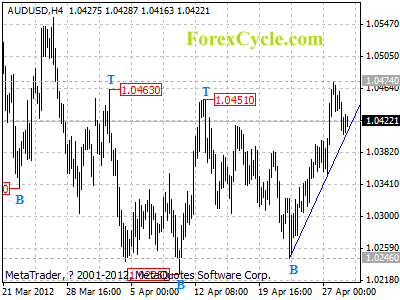London Gold Market Report
from Ben Traynor
BullionVault
Monday 30 April 2012, 08.00 EDT
SPOT MARKET gold bullion prices held above $1660 an ounce during Monday’s morning trading London – holding on to gains from last week of 1.1% – while stock markets ticked lower, commodities were broadly flat and US and German government bonds gained as Spain continued to generate headlines.
“On the physical front [however] things were looking not as one might have hoped for [last week]”, says a note from Swiss bullion refiner MKS.
“There’s no support from the physical market,” one Hong Kong dealer told newswire Reuters this morning.
Prices for silver bullion fell this morning to $31.10 per ounce – 0.6% down on Friday’s close.
Gold bullion prices in Euros meantime hit their highest level in almost two weeks this morning, touching €40,474 per kilo (€1259 per ounce) as the Dollar made up some lost ground against the Euro.
Earlier on Monday, the US Dollar Index – which measures the Dollar’s strength against a basket of six other currencies – fell to its lowest level in almost a month, continuing last week’s slide.
The Dollar’s slide was compounded on Friday after preliminary gross domestic product data showed the US economy had slowed by more than expected in the first quarter of 2012, leading to speculation that the Federal Reserve might embark on a third round of quantitative easing.
“We don’t know whether there will be QE3,” the Hong Kong dealer said.
“If the economic performance continues to be good, then there will be a diminishing prospect for QE.”
“In the short run, you can have one or two weeks for the market to get excited about QE,” adds Dominic Schnider, Singapore-based head of commodity research at UBS Wealth management.
“If you look for QE, we are going to have a situation where prices will trend higher.”
The Spanish government is in talks to set up a “bad bank” scheme, which would see troublesome property loans taken of banks’ books and transferred to new asset management companies, the Financial Times reports.
Spanish GDP meantime fell by 0.3% in the first quarter of the year, according to official data published Monday. This is less than the 0.4% forecast by the Bank of Spain last week.
The government in Madrid forecasts that Spain’s economy will contract by 1.7% in 2012, before growing 0.2% next year. The government has set a deficit-to-GDP target of 5.3% for this year, and 3% for 2013.
By contrast, ratings agency Standard & Poor’s – which last week downgraded Spain’s sovereign rating from A to BBB+ – said last week it expects negative growth both this year and next, with the deficit-to-GDP ratio hitting 6.2% this year and 4.8% next.
“It’s likely [Spain’s government will] have to create more fiscal tightening,” says Citi economist Guillaume Menuet.
“That’s going to be counterproductive.”
S&P followed the sovereign downgrade on Monday by taking negative rating actions on 16 Spanish banks. Several banks had their debt ratings cut, among them Santander, while others were placed on CreditWatch negative, a move which often precedes a downgrade.
Despite the downgrades, Spanish 10-Year bond yields remained below 6% this morning, a level they breached for the first time in the Euro era last July, and above which they have traded at several points over the last month.
In France meantime, incumbent president Nicolas Sarkozy has closed the gap on his Socialist Party opponent Francois Hollande, according to a poll published Monday.
The Ipsos poll, for which voters were surveyed on Friday and Saturday, shows Sarkozy still lags Hollande, with only 47% of the vote ahead of this Sunday’s runoff.
“Sarkozy has moved further to the right,” says the Wall Street Journal, “repeatedly underlining his strong line on immigration and a pledge to strengthen France’s borders in an attempt to pick up the first round share of almost 18% achieved by Front National’s Marine Le Pen.”
“Austerity alone won’t help cut debt,” Hollande told his supporters at a rally yesterday.
“The head of the [European Central Bank] can also see [this]. They are starting to hear what we are saying.”
German chancellor Angela Merkel however said at the weekend “there will be no new negotiations on the fiscal pact”, referring to the Fiscal Stability Treaty agreed by 25 of the 27 European Union members, which states they will seek to bring their budgets into balance or surplus, with counter measures being triggered should they miss agreed targets.
Over in Greece, where voters are also due to go to the polls this Sunday, the Golden Dawn party – whose leader has been filmed making a fascist salute – may be set to enter parliament for the first time, Bloomberg reports.
In New York meantime, the difference between bullish and bearish contracts held by noncommercial gold futures and options traders on the Comex – the so-called speculative net long – fell 5% in the week ended last Tuesday, according to Commodity Futures Trading Commission data published late Friday.
Long positions fell by the equivalent of 9.4 tonnes of gold bullion, while at the same time short positions rose by the equivalent of 13.6 tonnes.
Ben Traynor
BullionVault
Gold value calculator | Buy gold online at live prices
Editor of Gold News, the analysis and investment research site from world-leading gold ownership service BullionVault, Ben Traynor was formerly editor of the Fleet Street Letter, the UK’s longest-running investment letter. A Cambridge economics graduate, he is a professional writer and editor with a specialist interest in monetary economics.
(c) BullionVault 2011
Please Note: This article is to inform your thinking, not lead it. Only you can decide the best place for your money, and any decision you make will put your money at risk. Information or data included here may have already been overtaken by events – and must be verified elsewhere – should you choose to act on it.





 Tradervox (Dublin) – Analysts are warning that the loonie might not just pare its gains against the greenback , but it might also loose its best performing form it has gained for the last six months. Analysts are saying that the expected increase in the interest rate may be bad for the Canadian dollar as it would restrict consumer spending which is the main support for the loonie.
Tradervox (Dublin) – Analysts are warning that the loonie might not just pare its gains against the greenback , but it might also loose its best performing form it has gained for the last six months. Analysts are saying that the expected increase in the interest rate may be bad for the Canadian dollar as it would restrict consumer spending which is the main support for the loonie.



